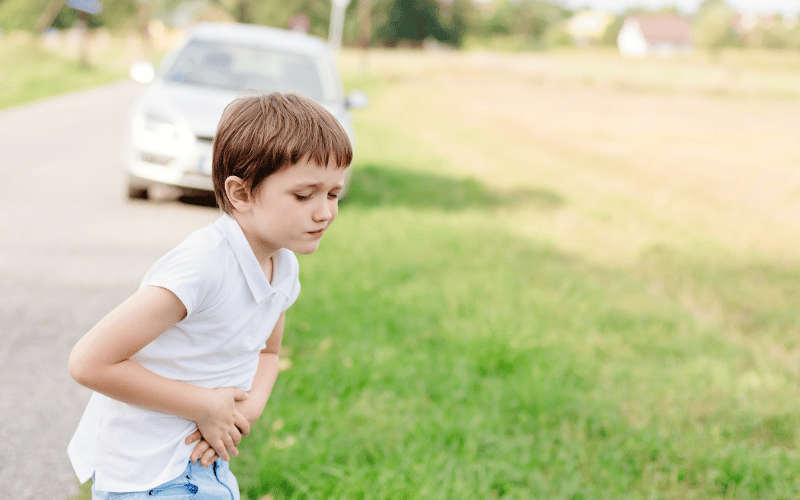Symptom 3: Vomiting and Regurgitation

For most people, vomiting and regurgitation may seem like interchangeable terms. But in the realm of EoE, there’s a profound difference. While both involve the upward movement of food, their causes and implications set them apart. The esophagus, inflamed by excessive eosinophils, plays a pivotal role in these symptoms.
Vomiting isn’t just a simple reflex for kids with EoE. When food is consumed, and the inflamed esophagus cannot guide it properly to the stomach, the body’s natural response is to expel it forcefully. The act of vomiting ensures that no further harm or discomfort is caused by the contents in the esophagus. However, over time, this recurring reaction can lead to other health issues.
Regurgitation, on the other hand, can be a less aggressive experience, but no less concerning. It’s the partial return of food back to the mouth, usually without the forceful expulsion seen in vomiting. It’s like the food makes a U-turn before fully descending. This can be both a source of discomfort and embarrassment for the child, especially when it happens in public.
Beyond the physical discomfort, there’s an emotional component to consider. Regular episodes can make eating a stressful affair. Children might become anxious around mealtimes, anticipating the next episode. This anxiety, if left unchecked, can seep into other areas of their life, impacting their overall mental wellbeing.
Parents and caregivers must approach the situation with sensitivity and understanding. While immediate relief measures, such as medications, are beneficial, long-term strategies focus on managing EoE’s root causes. This can involve dietary adjustments and continuous monitoring to ensure that the child receives the nutrients they need without the accompanying distress. (3)